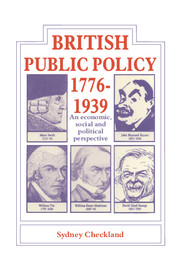Book contents
- Frontmatter
- Contents
- Preface
- Introduction
- Part I Industrialisation and war, 1776–1815
- Part II Assimilating the industrial revolution, 1815–51
- Part III The Victorian apogee, 1851–74
- Part IV Industrial maturity and the ending of pre-eminence, 1874–1914
- Part V Total war and troubled peace, 1914–39
- 14 The policy imperatives of war; the reconstruction debate and the dismantlement of control, 1914–21
- 15 The strains of nationalism: Wales, Scotland and Ireland
- 16 The advent of peacetime macro-economic management
- 17 Micro-management: the restructuring of industry and agriculture; the regions
- 18 Micro-management: the public sector
- 19 The business response
- 20 The political and industrial attitudes of labour
- 21 The welfare share: its elements and adequacy
- 22 Public policy by 1939
- Bibliography
- Index
19 - The business response
Published online by Cambridge University Press: 05 August 2012
- Frontmatter
- Contents
- Preface
- Introduction
- Part I Industrialisation and war, 1776–1815
- Part II Assimilating the industrial revolution, 1815–51
- Part III The Victorian apogee, 1851–74
- Part IV Industrial maturity and the ending of pre-eminence, 1874–1914
- Part V Total war and troubled peace, 1914–39
- 14 The policy imperatives of war; the reconstruction debate and the dismantlement of control, 1914–21
- 15 The strains of nationalism: Wales, Scotland and Ireland
- 16 The advent of peacetime macro-economic management
- 17 Micro-management: the restructuring of industry and agriculture; the regions
- 18 Micro-management: the public sector
- 19 The business response
- 20 The political and industrial attitudes of labour
- 21 The welfare share: its elements and adequacy
- 22 Public policy by 1939
- Bibliography
- Index
Summary
Business as a component of power
British business had by 1919 established its two national bodies, the Federation of British Industries (1916) and the British Employers' Federation (1919). But before they could exert their full weight upon public policy it was necessary for them to arrive at a programme capable of carrying the support of the mass of their memberships. Because of the great variety of interests represented this was very difficult. There were two great lines of cleavage. The first was between the men in command of the older staple industries and those who ran the newer more science-based (and/or consumer oriented ones). The second was between the large firms with substantial resources and the smaller ones with slender margins, unable to sustain any prolonged contest with labour.
Nevertheless, the problem of business power in reciprocal relationship to labour power in the contest for state support, became increasingly explicit as the inter-war years succeeded one another. It had become clear well before the war that over large sectors of industry it was no longer possible to dispose of the problem of business power by dissolving it in the concept of competitive markets, each with an infinite number of buyers and sellers, none of whom could affect the price or control the supply. The war had made competitive assumptions even more implausible. For though the state made a great effort to return to them in many aspects after 1918, it soon became clear that a full revival of laissez-faire would be very difficult to implement or sustain.
- Type
- Chapter
- Information
- British and Public Policy 1776–1939An Economic, Social and Political Perspective, pp. 340 - 346Publisher: Cambridge University PressPrint publication year: 1983

